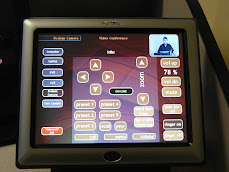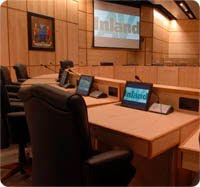Grant's Perspective on ... building in reliability to AV systems
Reliability is key to audiovisual system design.
Make sure we utilize quality product. An obvious and simple enough idea but it does take experience to know what product is good and what isn’t. Being around as long as we have, the product line is solid. As technologies emerge and evolve we come across many products. Some are good (Epson BrightLink qualifies as a great product), some we decide to not use and there are some we know not to touch.
Make sure the Integration will work. Like I say, “Improved Communication from Technology Integration”. When the various components for a system are selected to function as one, you’re good to go. Again, a simple strategy that should be easy to implement but too often I see those who think one can simply draw boxes representing various devices and connect them together with a line. Not the case. Even when two components ideally should work together, experience shows us that some components don’t play nice. I know when I chat with IT people about this and remind them of the clone computers that were so troublesome because one type of hard drive doesn’t work well with one type of mother board, and so on and so forth. They always fervently shake their heads in agreement as they know you can’t rely on those types of systems.
System commissioning. This is when the gear has been installed and verified functioning as per the design spec, the various items need to be setup, or “commissioned”. This completes the system. But sometimes a setting in one device may affect another. Some features of some of the various devices within the system may need to be disabled, enabled, or a certain parameter selected to ensure the system performs reliably. Or an item might require configuring via a laptop. Here’s an example: A projector will auto search for live video sources; meanwhile the control system is commanding the same projector to switch to a particular input. At certain moments this may cause the projector to get confused and it will “lock up” like any CPU controlled device typically will. Of course this will happen when the CEO wants to use the system.
One way of creating reliability is to have less components. Here’s an example of a situation that could make or break a system depending on what or who’s product you use. There are times where a client will want wireless touch panels but I advise to use wired if wireless ability really is not required (sometimes it is just there to look cool), thereby eliminating a component like a wireless touchscreen that might be affected by outside factors like interference. This is especially a trade off when using anything wireless.
Crestron has the CEN-WAP-ABG-1G Wall Mount 802.11a/b/g Wireless Access Point (pictured below). This device provides wireless connectivity to wireless Crestron WiFi Touch panels.
Crestron has the CEN-WAP-ABG-1G Wall Mount 802.11a/b/g Wireless Access Point (pictured below). This device provides wireless connectivity to wireless Crestron WiFi Touch panels.
But the design of this Crestron device really fits our AV world well. I like the fact that this WAP can be placed in the Boardroom or theater so there are no issues with signal strength like with a router placed in a metal (signal blocking) rack one hallway over or in a back room. This WAP has also been designed for Crestron WiFi touch panels, so that’s half the battle right there. It’s somewhat inconspicuous, and it looks good too. And so far they’ve been dependable. It’s on my list.
Grant










